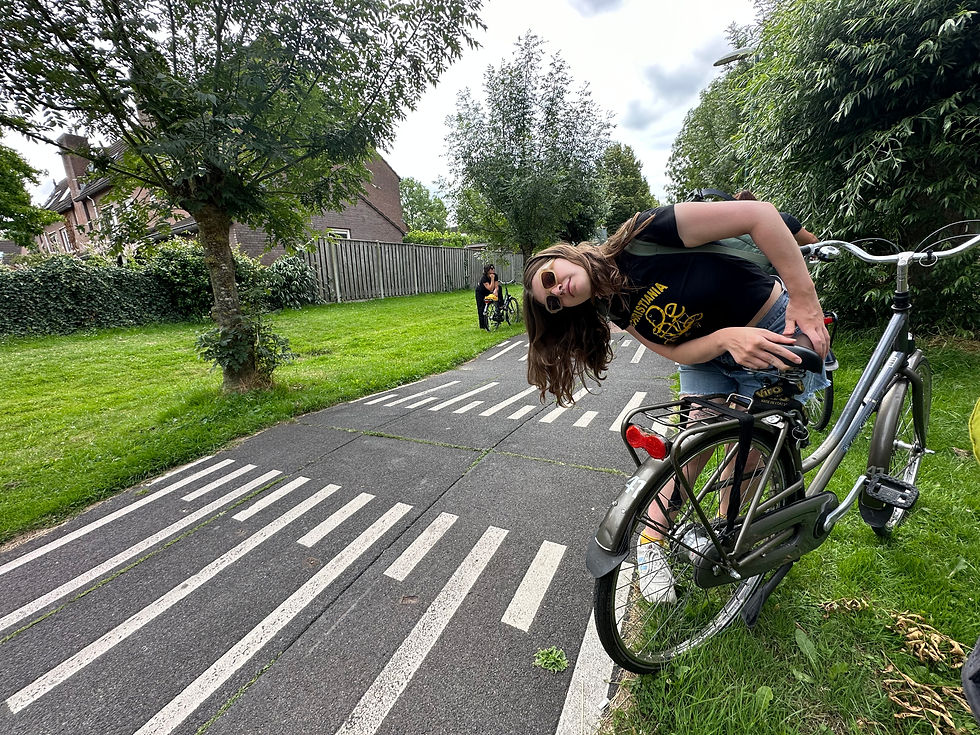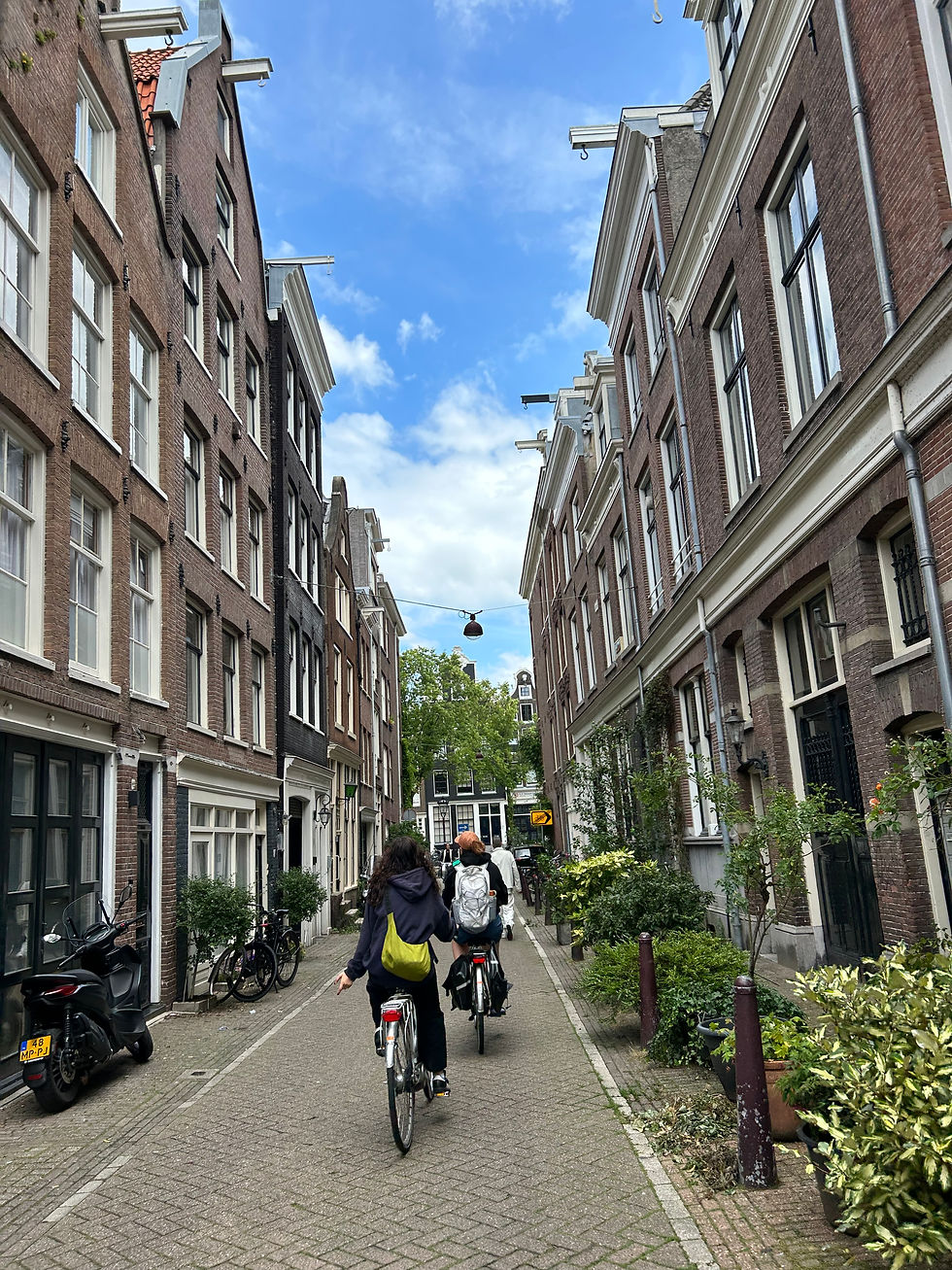Structured: 5 Insights
- emmameyer22
- Jul 16, 2023
- 2 min read
Countries like the Netherlands and Denmark have not always been safe places for cycling. While they have a stronger bicycle culture than the United States, their extensive bike networks were the result of various catalysts from activists, policy, and industry decisions commencing in the 60s and 70s. Amsterdam used to be car dominated and at one point the Netherlands had more traffic deaths than the United States. The difference is how we respond to traffic deaths and enable access to opportunity, resources, and a greater quality of life. Stop de Kindermoord was a movement in the 70s that literally translates to “stop the child murder.” People took to the streets to protest children being killed by cars.
I have spent the past month getting around by bike, experiencing what Copenhagen, Malmo, Amsterdam, Nijmegen, and Utrecht have to offer. I learned that one of the most important aspects of active transportation is the small details. You can start to encourage biking with small details such as bike parking, banisters, and bike traffic lights that send a message that cyclists are supposed to be on the road.

To create a comprehensive cycling network you need to invest in hardware, bicycle infrastructure. This includes dedicated bike tunnels and bridges, bidirectional cycle paths and shortcuts, and good bike parking near entrances and exits. Cycling should be integrated with public transportation. A transit trip begins and ends with walking or biking. Most importantly the Dutch invest in people. Software is just as crucial as hardware. Behavior and education shapes cycling habits and culture. When parents show their children correct behavior when participating in traffic and are examples of good cyclists future generations witness and carry on cycling behavior.
Before I came to Denmark and the Netherlands I had watched planning YouTube such as Not Just Bikes that glamorized the bike infrastructure in Dutch cities. While Amsterdam and Utrecht are some of the most bike friendly cities in the world it is important to note that they have their own issues and are still redesigning streets to make them safer. I had this idea that there would be little to no cars in the city center. I was wrong. The Danish and the Dutch drive a lot. In fact, car ownership is increasing in Copenhagen despite the well connected super cycle highways.
Every city is different and has different needs that shape the infrastructure. We can’t be Amsterdam, but we can take inspiration from how they plan for people on bikes. We can enable a greater quality of life by prioritizing cyclists and providing safety measures and connected routes for bikes to be desired as transportation.








Comments